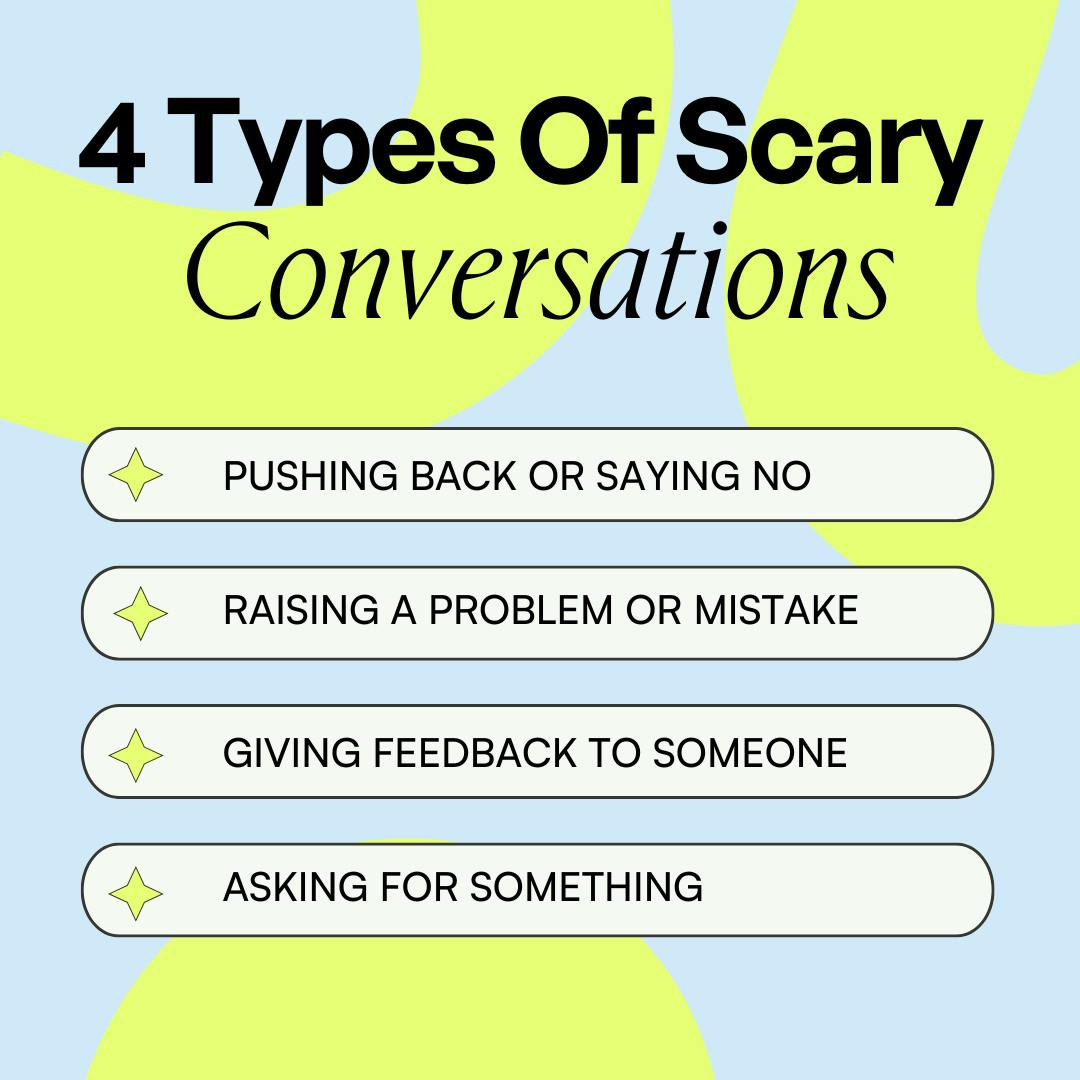How to have a tough conversation
Just Googled "what's the plural of no", hope I got it right ....
There's this story I always come back to about legendary HR leader Phillip Wilson, whose past bosses include Steve Jobs and Larry Ellison (CEO of Oracle).
His days were filled with handling left-field requests... "We need to be bold! Let's fire this whole team today!" (not exactly that, but same vibe 🫠).
Instead of starting with 'no', he learned to say:
"Yes, we can do that, and here's what that will look like. Here's a mapped-out view of the consequences."
Today we're talking about the 'doing' part of having tough conversations. We covered psyching yourself up for them last week ICYMI.
There's nuance to every situation and it's hard to give generalized advice, but here’s a curated list of the best tips I've collected over the years.
1. Same side of the table (literally & figuratively)
Sit side-by-side, at a 90° angle, or even go for a walk, vs sitting directly across from someone face-to-face (according to science it's better for trust and cooperation).
Get out of a 'me vs you' mindset and into 'it’s us against the problem'.
Use ‘we’ language “we need to redo this part of of the project” vs “you need to redo this”.
2. Don't start with small talk
If they know it’s going to be a tough conversation (e.g. a meeting has been called), don’t do small talk at the start. It makes people feel uncomfortable and feels disingenuous. Start with something like "thanks for meeting me".
If you’re raising it as part of a regular chat, of course warming it into it is fine.
3. Do start with big talk
Connect it to something bigger where there's a shared goal, e.g.:
“We’re both trying to get this launched on time”
“We both want to talk about this as a success in our annual review”
4. Preview & Pause method
Don’t just dive in and talk chronologically through the explanation or feedback for 10 mins straight. Try previewing and pausing:
“We’ve come up against a roadblock for [project]. The problem is XYZ. I’m going to walk you through the 3 possible solutions with pros, cons and implications for each. Does that sound ok? [pause]".
5. Stick to the facts
If it’s a problem or mistake, state the facts as unemotionally as you can.
If it’s feedback on someone’s behaviour, ask yourself — would that behaviour be observable to someone else?
Don’t over-explain. People will ask for more detail.
6. People need to feel heard
People can’t move on unless they feel heard. Without sounding patronizing, use language like “I hear you on XYZ", "I feel you, it's [insert feeling]", "I’m with you”. If relevant, take responsibility for small parts that are your fault.
7. Give alternatives, not ‘nos’
(Just Googled "what's the plural of no", hope I got it right 🫣)
For sure you want to be clear on whether something is possible or not, but try giving alternatives instead of a flat ‘no’.
“Because of this reason, we can’t do that, but here’s 3 things we can do...”
8. Not about you
If it's an ask, frame it around the company benefit, not you individually.
“I know it’s a team goal to lift our game in [area] right now, there’s a course that will give me XYZ skills and that’s going to mean ABC for the team. Can we talk about the company covering the course fee?”
9. Structure it
I’m a sucker for a framework. I like:
Goal, Problem, Solution (for sharing updates/problems)
Empathy, Rationale, Alternatives (for pushing back on people/clients)
Ask AI 🔮: “Teach me about the [insert] framework for having tough conversations and give me 3 examples of it relevant to my role as a [your role] in [industry]."




